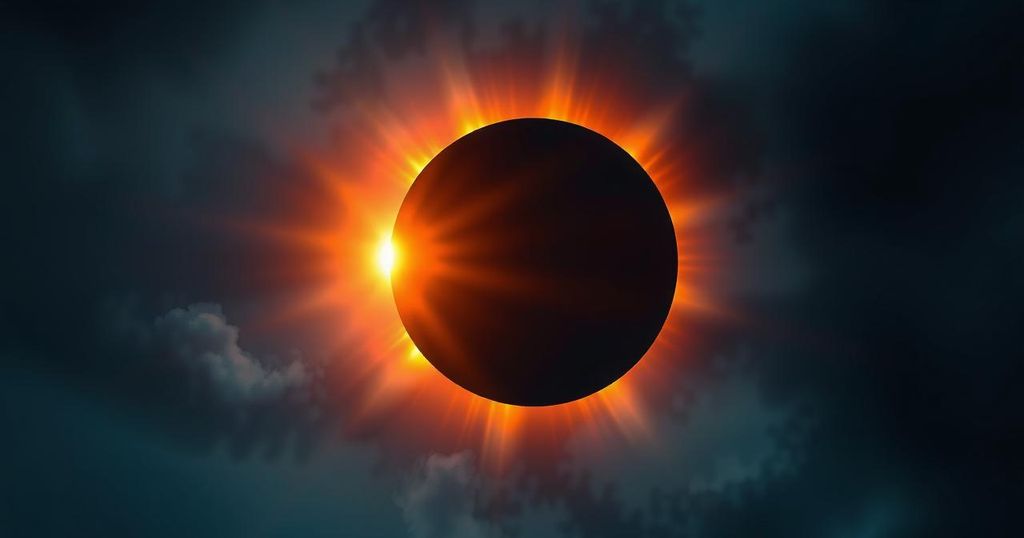Surya Grahan 2025: Viewing Safety and Visibility Insights
A partial solar eclipse will occur on March 29, 2025, creating a double sunrise effect in some regions, while India will not witness it. Eye safety measures are crucial, as regular sunglasses are insufficient for viewing the eclipse. Certified eclipse glasses are necessary to protect vision, and precautions for skin protection should be taken during outdoor viewing.
On March 29, 2025, a partial solar eclipse, referred to as a double sunrise phenomenon, will occur. This celestial event involves the Moon partially obstructing the Sun’s light as it transitions between the Earth and the Sun. However, it is important to note that India will not witness this phenomenon, while locations in the U.S., Canada, Greenland, and Iceland will be fortunate enough to experience it.
The solar eclipse will follow the schedule of 2:20 PM IST as it begins, peak at 4:17 PM IST, and conclude by 6:13 PM IST, lasting approximately four hours. In regions where the eclipse will take place, observers will have a unique visual experience of two sunrises as the eclipsed Sun rises and the second occurrence happens when the eclipse concludes.
The eclipse will be visible across parts of eastern Canada to northern Russia and may extend to most of Europe, as well as sections of northeastern North America and northwest Africa. According to the Paris Observatory, the eclipse will stretch from 08:50 GMT to 12:43 GMT. This event is relatively rare, as it requires precise alignment between the Sun, Moon, and Earth.
While this eclipse promises an exciting spectacle, eye safety must be prioritized. NASA emphasizes the necessity of using certified eclipse glasses or handheld solar viewers to protect one’s vision. Regular sunglasses are inadequate for viewing the eclipse safely, as they do not meet the required darkness standards.
Moreover, individuals must ensure that their eclipse glasses are free from any scratches or damage and supervise children to ensure proper usage. It is also crucial to avoid using eclipse glasses with telescopes, binoculars, or cameras to prevent eye injury. The only safe time to view the Sun without glasses is during totality when the Moon completely covers it, requiring immediate resumption of eye protection when any part of the Sun becomes visible again. Additionally, outdoor observers should take necessary precautions, such as wearing sunscreen, hats, and protective clothing to safeguard against sun damage during the viewing experience.
In summary, the partial solar eclipse on March 29, 2025, known for its double sunrise visual effect, will be visible from select regions while leaving India unobserved. Ensuring eye safety with certified eclipse glasses is crucial, and appropriate measures must be taken to protect one’s skin during the event. Understanding the timing and visibility of this phenomenon enhances the experience of witnessing such a rare celestial alignment.
Original Source: www.hindustantimes.com




Post Comment